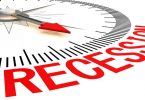If the bottom line on your tax return shows that you’ll owe more money than you’ll have on hand when April 17 comes around, don’t run out to borrow the cash, raid your retirement, or put your tax tab on a credit card. It turns out that one of the easiest, fastest, safest – and cheapest – ways to finance a tax bill is directly through the IRS.
Pulling cash out of your retirement accounts, draining your emergency fund or putting your tax bill on a credit card can be expensive, risky or both, which won’t help when you’re trying to get out of debt. A better option might be financing through the IRS, which is charging an unbelievably low-interest rate of four percent on unpaid taxes from the first quarter of 2016.
Let’s figure you want to pay off an unexpected tax bill of $5,000 within 24 months. Beyond a loan from a friend or family member, your options are:
- Drain your emergency savings: This certainly feels like an emergency but, since you have other options, explore those first. You won’t have the same flexibility to pay up if your transmission craps out or you end up in the emergency room.
- Pull money out of retirement accounts: You’ll have to pay regular income tax on whatever amount you take (local, state and federal), plus an additional 10 percent penalty if you’re younger than 59-1/2. That added income could push you into a higher tax bracket, too. At best, this will cost you more than $1,500 on top of what you owe in tax.
- Credit-card cash advance: A cash advance from a low-rate credit card would charge about 12.99 percent interest. Over 24 months, the bill would cost you $6,017, plus advance fees. If you have bad credit and used a 22.9 percent card, you’d pay $6,591 in total, plus fees. Either way, you’re paying more than $1,000 extra. Plus, you’ll start paying interest from the first day you take the money.
- Charge it: If you put your tax bill directly on your card by using one of the approved IRS vendors, you won’t pay the cash advance fee, you’ll get the normal grace period, but you will pay a service fee of 1.87 percent to 1.99 percent, which adds about $100 on top of your card interest charges.
- Make a payment plan: The IRS computes interest daily on its installment payment plan, but the low rate helps keep costs down. Your interest on $5,000 starts at 55 cents per day, for a total interest cost of a bit more than $205 if you pay off $5,000 in 24 months. The 0.25 percent penalty, once you’re in the payment plan, adds another $156, giving you a total cost of $5,362.
You’ll also pay a fee of $43, $52 or $120 for setting up the payment plan. The IRS won’t charge you anything to set up an installment plan if you can pay the entire amount due in 120 days, but you’ll still pay the penalty and interest. If you owe less than $10,000 and can pay it off your bill three years, you’ll qualify for the guaranteed installment plan, if you’ve filed all your returns and are current on tax bills for the previous five years. Above $10,000, your installment plan isn’t guaranteed, but the program is streamlined to give you 72 months to pay.
The IRS takes about 30 days to review requests for payment plans, so if you aren’t sure you’ll qualify, definitely call and talk to a representative, which can entail quite a wait during the peak of tax season, given IRS budget cuts of recent years. But, if you meet the criteria outlined here, the basic IRS payment plan could be the best way to go. You can apply online at IRS.gov, mail-in Form 9465 or call 1-800-829-1040.
Whatever the outcome, your best bet is to pay whatever you can and file on time to avoid the much more expensive failure to file penalty of 5 percent on your outstanding tax bill.








